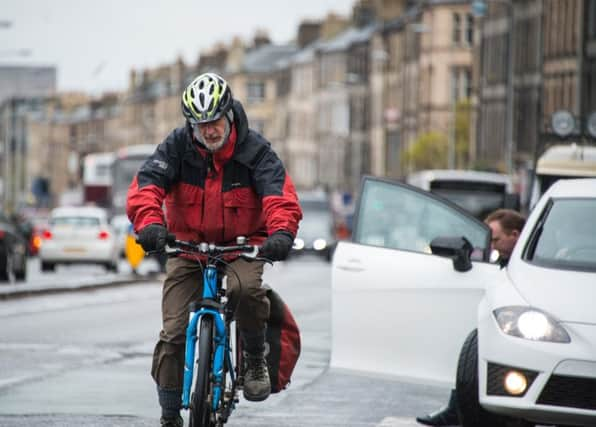Alastair Dalton: We should give bikes right of way


Cycling is a very convenient form of transport... for ministers to support.
It could reduce congestion, cut emissions and get people fitter, so it’s unsurprising the Scottish Government is clinging resolutely to its “vision” of increasing the number of journeys by bike from 2 per cent to 10 per cent in little over four years.
Advertisement
Hide AdAdvertisement
Hide AdBut while politicians love posing for pictures on bikes, most of the rest of us are somewhat more reluctant to get out of our cars and on to the saddle.
One of the biggest deterrents is safety - many people are unfamiliar with and fearful of cycling on roads with other traffic.
The Scottish Government’s Transport Scotland agency understands this, and last week launched a design competition to encourage more segregated cycle lanes, which have kerbs to separate them from other vehicles.
Transport minister Derek Mackay said such lanes, common in the Netherlands and Denmark, would “encourage less confident cyclists to make day-to-day journeys by bike”.
This is not before time, since some of the few existing examples in Scotland fall far short of what is needed to attract more people to try cycling.
A segregated route which connects Glasgow city centre with the West End is hard to follow, with poor markings and sudden switches from one side of the street to the other. This lack of consistency betrays the trust of cyclists trying to pick their way along it.
The route also features a bewildering series of cycle-specific traffic lights, which are confusingly positioned way over head height and adjacent to those for other traffic.
If Scotland is serious about boosting cycling in cities - where most of us live - it must take a far bolder and simpler approach.
Advertisement
Hide AdAdvertisement
Hide AdIt doesn’t help that cycle lanes have different colours in different cities, and some on pavements don’t even have cycle symbols, leading to conflicts between riders and pedestrians.
So let’s make things much clearer. Decide on a nationwide single colour and use it so cycle lanes stand out for all to see over their entire length.
We need to be equally bold about giving cyclists priority over other vehicles. Pedestrians can stop the traffic at pelican crossings, and many traffic lights are programmed to give buses precedence.
So there’s a need for a statement here - at dedicated lights for cyclists, they should get to go first by triggering to lights to go green on approach.
However, we’re likely to be waiting a long time for any significant increase in segregated lanes, so let’s do far more to promote Scotland’s often excellent network but massively under-used network of off-road paths, linked by quieter streets.
For a start, you wouldn’t know such routes existed without a cycle map, since they are omitted from many road atlases and online street plans.
Sustrans, the cycle path developers, generally does a good job maintaining and signposting main routes, and local authorities have started upping their game.
However, other paths are so badly signed that only the determined would give up.
Advertisement
Hide AdAdvertisement
Hide AdBut even on the national cycle network route between Edinburgh and Glasgow, there have been lengthy section closures that would be unacceptable on the roads.
Among them is a stretch closed until next May for the construction of a footbridge over the Clyde.
The lengthy diversion is poorly signposted, involves several busy roads and has a section where cyclists are asked to wheel their bikes along a pavement. If we really want more people to cycle, it’s time for a hard look at whether what’s happening on the ground is helping to achieve that.